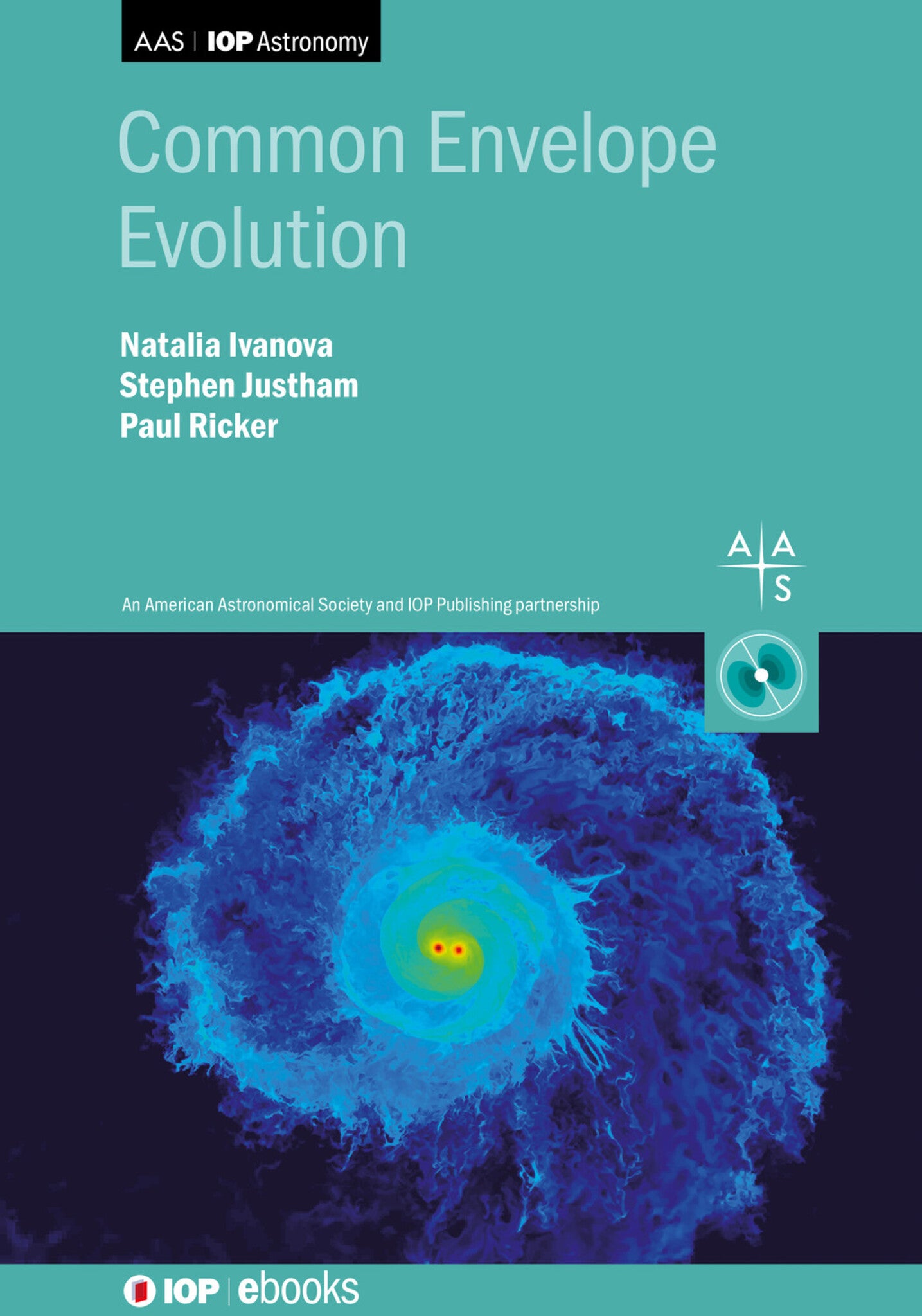We're sorry. An error has occurred
Please cancel or retry.
Common Envelope Evolution

Some error occured while loading the Quick View. Please close the Quick View and try reloading the page.
Couldn't load pickup availability
- Format:
-
01 December 2020

Common envelope evolution is the most important phase in the lives of many significant classes of binary stars. During a common envelope phase, the stars temporarily share the same outer layers, with the cores of both stars orbiting inside the same common envelope. This common envelope is sometimes ejected and helps to explain the formation of a wide variety of astrophysical phenomena, including cataclysmic variables, X-ray binaries, progenitors for type Ia supernovae, and gravitational-wave mergers.
Modeling common envelope evolution is a challenging problem, and this important process has typically been described in evolutionary models using very approximate treatments. This book explains the physics of common envelope evolution and relates it to the approximations that are frequently used for modeling the onset, progression, and outcome of common envelope phases.
Key Features
- The first book dedicated to the topic
- Written by world-leading experts in the field
- Provides a thorough overview of theoretical foundations and state-of-art numerical models
- Suitable for graduate students and researchers

SCIENCE / Physics / Astrophysics, Galaxies and stars

While there is an extensive literature of common-envelope-evolution papers in astrophysics journals, to my knowledge there has been no comprehensive textbook that collects this information together, until now. This volume presents itself as a graduate text, but will be useful to anyone who wants a convenient reference to the collective knowledge of the field. The various chapters cover the underlying physics and the separate stages of the evolutionary processes. There is also a chapter devoted to the numerical methods and computer codes that are needed to model the complex physics, coupled with a useful evaluation of how far these codes can be trusted. Every chapter ends with a comprehensive bibliography. Overall, this book is an excellent and handy companion for astrophysicists who need to understand common-envelope evolution in relation to their research.
Whatever medium you prefer, this is an excellent book, written by leading experts in the field. It is thorough and accessible to both graduate students and researchers. I recommend it wholeheartedly.
Martin Barstow. October 2021 The Observatory Magazine
Much of the early development of this book occurred during the KITP STARS17 program, which was supported in part by the National Science Foundation under grant PHY 17-48958. NI also acknowledges support from CRC program and NSERC Discovery. PR also acknowledges support from NSF under grant AST 14-13367.
Foreword
1 Introduction
2 Main Phases
3 The Energy Budget
4 The Codes That Do the Job
5 The Onset of the Common Envelope
6 The Plunge-in
7 The Slow Spiral-in
8 Mechanisms of Mass Ejection
9 The Outcomes of CE Simulations
10 Linking with Observations



